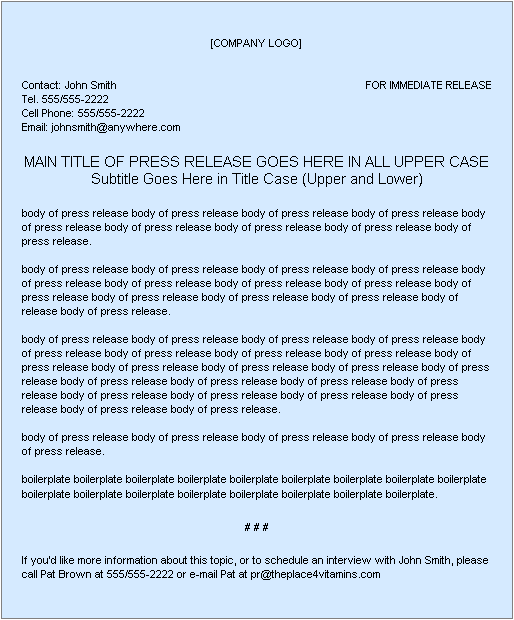
by Phil Britt
This is the second of four posts on how to write a press release. Each post will focus on a different aspect of press release writing. This post focuses on the basic elements of a release.
Once you’ve determined the purpose and the audience for the press release, the next step is to collect the materials you need, and then write it. You might have everything at your fingertips, or usually can get it with a phone call or two.
A press release should follow the same general principles as one learns in Journalism 101. Include who, what, when, where and how. But it’s the last one, how [you write it] will be the major determining factor on whether the release will be “picked up” by the press.
If the release is about a new product or service, you’ll want to include some of the specs and a good photo. But, as the old sales aphorism says, sell the sizzle, not the steak. For example, it’s better to say a technology will enable a consumer to download two hours of video in five minutes than to just mention the download speed in gigabytes per second. You’ll probably include both somewhere in the release. But put the sizzle higher. Include it in the head or subhead. It’s more likely to grab the audience’s attention, meaning the release is more likely to be used or a larger article is more likely to be written than if you stay with simply the specs.
A caveat: Your client, which in the above example, could be an executive with an engineering degree, may be in love with the technical specs. So you will need to counsel the client that the sizzle should have the top priority. But he or she may insist on the steak. So it may not be a battle you can win, but you can try.
In the first paragraph, you’ll generally want to include a date, the company’s name, headquarters location and the basic message of the release. Some clients will insist on jamming a lot of other information in the first paragraph. This leads to what a condition in the reader that a journalism professor once called MEGO (My Eyes Glaze Over). But that’s a battle you can let the client win without losing the overall effectiveness of the release.
Beyond that, you’ll want to include any important details, a client quote or two. Remember that the press is busy. Most online and print sites (as well as radio and television) have thin staffs that battle constant deadlines. They’re not going to go through long releases. So keep it simple. Anything beyond a second page (for a printed release) is unlikely to be read. An electronic release more than a few hundred words is usually too long.
Contact Information Critical
One of the most frustrating things for an editor, reporter, or blogger is when contact information isn’t included on a release. I even had a PR person tell me once, “we don’t want a lot of calls.”
(From Back to the Future) “Hello, McFly,” then why are you sending out the release? While there are a some online and print pubs that will run the release in full, the release will get better notice in those publications that are more selective. Even if it’s just so an editor can clarify something, include the contact information, with phone and e-mail at a minimum. It’s in your interest to have the press release information used when it’s fresh, so you don’t want to enable an editor or reporter to contact you in multiple methods.
Cell phone can be included, but you may want to only give that out to select press. Instant messaging information should be supplied if you have an IM account.
What are your thoughts?
Phil Britt is a 30-year writing veteran and has operated his own firm, S&P Enterprises, Inc.,(spenterprises@wowway.com) for the last 17 years, with articles appearing in many national publications, primarily in financial services and technology. He has worked with companies and PR firms from around the country, some as a journalist, and others as a subcontractor (never working on the same item “from both sides of the desk.”).


Leave a Reply